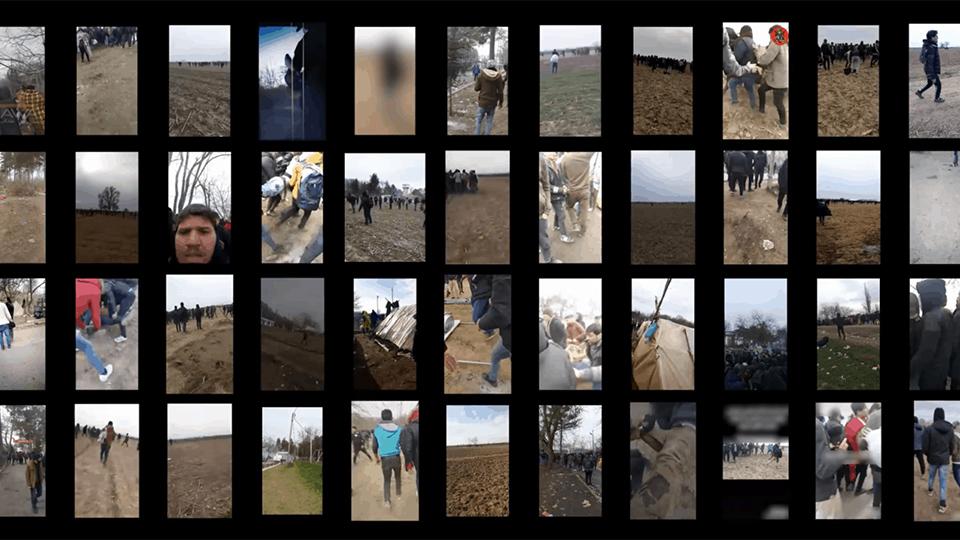Report into border death identifies gunshots from Greece
Primary page content
An investigation into violence on the Turkey-Greece border in March 2020 has concluded that gunshots causing the death or injury of migrants held at the fence most likely came from the Greek side.

Videos from 4 March 2020 collected through OSINT analysis © Forensic Architecture, 2020
Forensic Architecture, a research unit based at Goldsmiths, University of London, examined hundreds of videos and images, spoke to eyewitnesses and collected documents to piece together the events surrounding the death of Muhammad Gulzar, a Pakistani citizen.
The publication of Forensic Architecture’s report on Friday 8 May prompted more than 100 MEPs to write to the European Commission president and call for a formal investigation into Gulzar’s death. The letter asks the European Commission to investigate the findings revealed by FA’s reconstruction and report to the European Parliament.
On 27 February 2020, the Turkish government opened its borders with Greece in an attempt to exert political pressure on the EU to take in more migrants. Thousands of migrants and refugees were funnelled to the border fence near Kastanies/Pazarkule with the promise of an open route to Europe.
Police and military were deployed to the area by the Greek government in response, with migrants warned not to cross into Greece. Tension escalated into violence and on 4 March reports emerged of gunshots and casualties. Turkish authorities stated that Greek forces “used live rounds and wounded five asylum-seekers” while Greek authorities accused Turkey of spreading “fake news”.
Forensic Architecture’s investigation concluded that seven people sustained injuries. Mohamad Hantou from Syria, and Zeeshan Omar from Pakistan were named as among the wounded while 42-year-old Muhammad Gulzar was killed. Research by Sky News found that Gulzar had lived in Greece for over a decade but had returned to Pakistan in January 2020 to see family and get married.
Some 100 videos were studied, and high-resolution satellite imagery of the area used to look at the state of vegetation in the area and determine from which angle videos were captured, and place them within a 3D model. Seven injured people were identified from the videos and tracked across them, to confirm the time and location they were wounded.
By piecing together video footage a continuous timeline of events was created and in collaboration with Beck Audio Forensics, bursts of gunfire captured in the footage was analysed to determine live rounds from blanks. It was concluded that live rounds were fired from a semi-automatic rifle, and an expert was also able to pinpoint the location of the shooters in relation to the camera position.
The investigators obtained medical documents relating to Muhammad Gulzar, which stated that a 5.56mm bullet was retrieved from his body. Video footage and photographs showed Greek soldiers on the border fence armed with rifles capable of firing 5.56m, while no weapons of this kind were found on the Turkish side of the border.
Forensic Architecture’s report - a collaboration with Bellingcat and Lighthouse Reports, in partnership with Der Spiegel - has now been presented to lawyers representing Gulzar’s family, who will request that Greece launch an investigation to establish who was responsible for his killing. All evidence gathered will also be made available to investigating authorities.
The Killing of Muhammad Gulzar investigation was led by Christina Varvia and Stefanos Levidis and published on Friday 8 May 2020. Read the full report on forensic-architecture.org
Read the feature Death on the border on the Sky News website